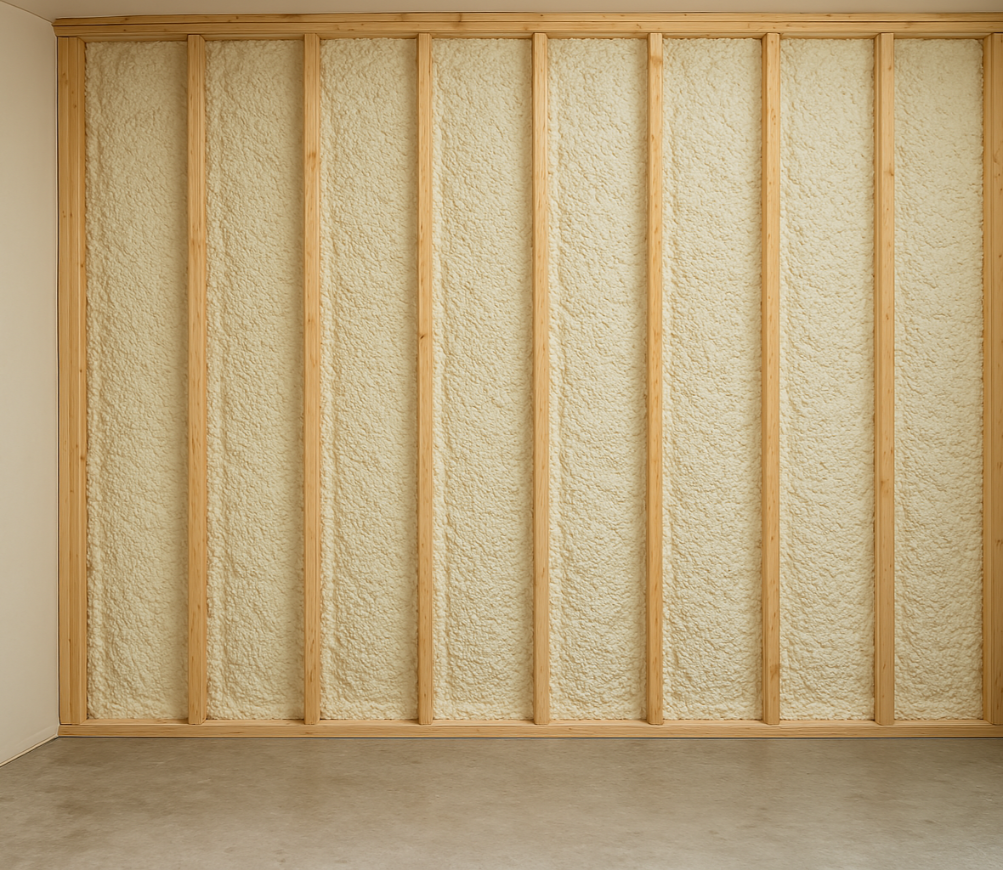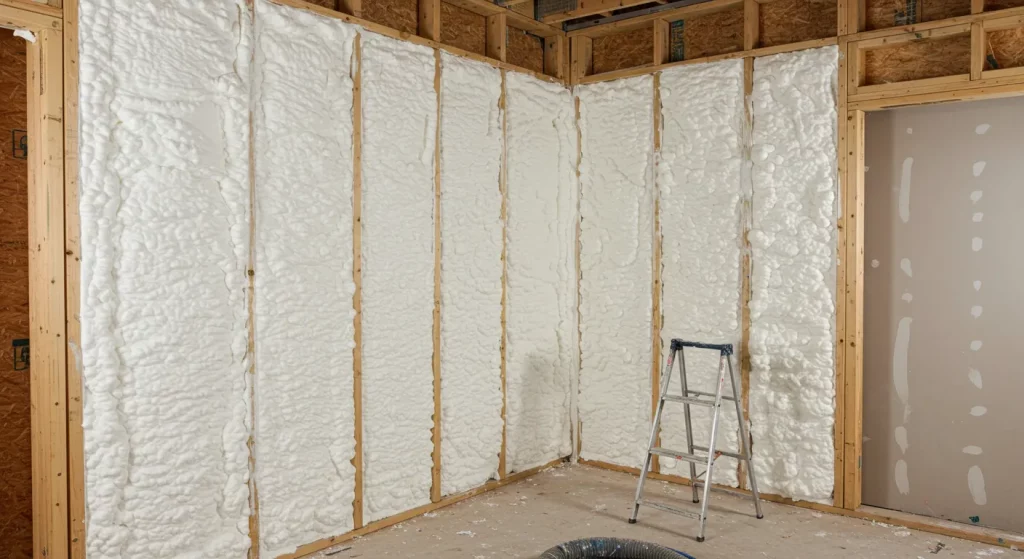
Spray foam thickness directly affects energy performance in Dresden homes. For closed-cell spray foam, 2 to 3 inches in walls and 3 to 5 inches in roofs or attic slopes typically provides optimal insulation and air sealing. Open-cell spray foam generally requires 5 to 6 inches in walls and 8 to 10 inches in attic applications for effective energy savings. Thicker applications beyond these ranges show diminishing returns for most residential uses in the region’s mixed-humid climate.
Armored Insulation relies on performance data, building codes, and on-site experience to determine the most efficient application depths. This guide explains how different spray foam thicknesses compare, backed by regional factors, thermal data, and field-tested insights.
Spray foam thickness affects two primary factors: R-value and air barrier continuity. In Dresden, where temperature swings and humidity levels fluctuate seasonally, balancing thermal resistance with proper moisture control is critical.
| Spray Foam Type | R-Value Per Inch | Typical Wall Thickness | Typical Attic Thickness | Vapor Barrier | Sound Control |
|---|---|---|---|---|---|
| Closed-Cell | R-6 to R-7 | 2-3 inches | 3-5 inches | Yes | Moderate |
| Open-Cell | R-3.5 to R-4 | 5-6 inches | 8-10 inches | No | High |
Bonus Tip: In attics with irregular framing or shallow cavities, open-cell foam can be easier to apply evenly without cutting performance short.
| Application Area | Foam Type | R-Value Target | Energy Savings Potential* | Recommended Thickness |
|---|---|---|---|---|
| Wall Cavities | Closed-Cell | R-13 to R-21 | Up to 18% | 2-3 inches |
| Wall Cavities | Open-Cell | R-19 to R-24 | Up to 20% | 5-6 inches |
| Attics/Roofs | Closed-Cell | R-30 to R-38 | 20-25% | 3-5 inches |
| Attics/Roofs | Open-Cell | R-30 to R-38 | 22-28% | 8-10 inches |
*Based on modeled DOE and NAIMA energy simulations for Zone 4 (which includes Dresden, TN). Sources: U.S. Department of Energy (2023), NAIMA Residential Insulation Factbook (2024).
Bonus Tip: Use thermal imaging post-installation to confirm even application and eliminate cold spots that can undercut savings.

Dresden falls within Climate Zone 4, which brings both heating and cooling demands. High summer humidity combined with winter chill calls for insulation that prevents air movement, moisture entry, and thermal bridging.
Before choosing spray foam type or thickness, consider:
Closed-cell starts performing around 2 inches. Open-cell requires at least 5 inches.
Yes, but each layer must fully cure before adding more. Limit total thickness to what the cavity supports.
Only to a point. Beyond optimal ranges, returns diminish. Focus on air sealing and cavity coverage.
Yes, especially closed-cell in unvented spaces. Always evaluate building moisture dynamics first.
For accurate recommendations based on your home type, cavity depth, and HVAC load, contact: Armored Insulation Email: [email protected] Phone: (270) 331-4844 Insulation decisions affect comfort and utility costs for decades. Work with insulation professionals who understand building science and local climate variables.
Spray foam offers better air sealing and higher per-inch R-values. It also reduces the need for separate vapor barriers in most cases.
Closed-cell should not contact active knob-and-tube systems. Electrical upgrades are advised first.
Properly installed spray foam can last 30 years or more without degradation.
It can reduce outdoor air infiltration, which helps limit dust, pollen, and pollutants.